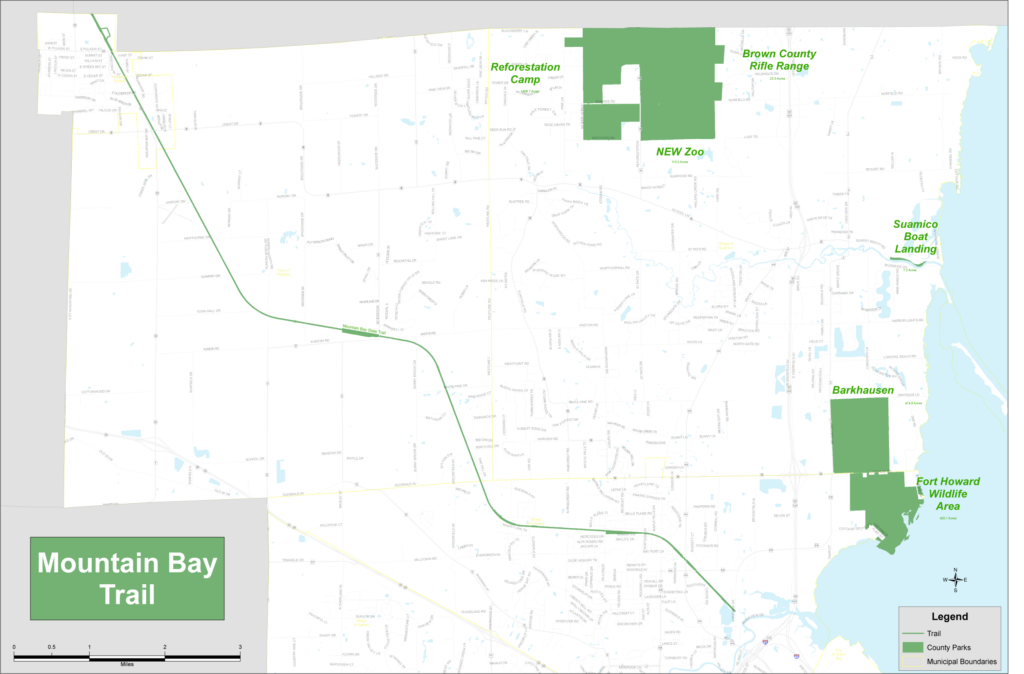Wisconsin Bike Fed, partners request increased funding for trail infrastructure

By William Kopp
Contributing Writer
BROWN COUNTY – In March, the Wisconsin Bike Fed, along with its partners in Trek and Rails-to-Trails Conservancy, asked state legislators for a yearly $18.5 million federal investment in active transportation to meet growing trail use.
Trail use has continued to increase throughout COVID-19 and has resulted in a 45% higher use nationally in 2022 than 2019.
Wisconsin Bike Fed is Wisconsin’s statewide bicycle advocacy organization, headquartered in Milwaukee, which follows three main focuses: advocating for bike-friendly laws and for state budget money to go toward developing facilities for people who bike or walk; teaching adults and kids how to ride bikes safely; and putting on events as well as publishing a newsletter and magazine that encourages people to come to Wisconsin to ride bikes.
The request made by the federation and their partners will go toward the Transportation Alternatives Program (TAP) — a program designed for alternatives to cars, like biking and walking.
An important part in the request for increased funding is the Bipartisan Infrastructure Law, enacted in the Infrastructure Investment and Jobs Act on Nov. 15, 2021, which authorized up to $108 billion for public transportation — the largest federal investment in public transportation in United States history.
“Since 2014, the Wisconsin budget has had only $7.4 million annually for Transportation Alternatives, and now, because of the Bipartisan Infrastructure Law, Wisconsin can get more money from the federal government for things like biking and walking,” said Executive Director of the Wisconsin Bike Fed Kirsten Finn. “And so, the $18.5 million is just federal tax dollars. But, the local governments need to put up a 20% match. So, if you want to build a trail in your town, you can get 80% paid for by the federal government through TAP by applying through the Wisconsin Department of Transportation, but then [local governments] have to commit to paying 20% of the project.”
The difference between $7.4 million and the requested $18.5 million may seem like a lot, but with inflation and the current rise in prices, it’s really not.
Finn added, “What we’re seeing in new proposals from engineering firms is that a mile of trail costs a million dollars. So, we’re talking about, in a year, putting in 18 miles of new bike infrastructure instead of 7 miles. So it’s still really, relatively, a modest amount that we’re able to do with that money.”
Trails affected by the increase in funding throughout Wisconsin will include trails like Flyway Trail of Buffalo County, Wisconsin Recreational River Bridge of Dane and Sauk counties and the Mountain Bay Trail of Brown, Marathon and Shawano counties which will build a pedestrian, cyclist and snowmobile bridge connecting trails over the Wisconsin river to replace the recently demolished Sauk City Rail Bridge.
Finn added, “In addition to building new trails, TAP funding is also used to improve existing state trails that are in need of resurfacing or improvement.
“One of the things I want [the public] to know is this $18.5 million is a pass-through. It doesn’t require any state spending. It requires a local match, but it doesn’t cost our state anything to accept these dollars.”
For local governments struggling to make the match, the governor has asked that a budget for $1.2 million be used to help communities that can’t afford to make the match to pay the 20% match.
“And so, I think that piece is really so important to the budget because it really helps the money to be spread more equitably throughout the state,” said Finn. “One of the unfortunate things that we’re seeing for the proposals submitted is that a lot of times these towns are asking not for trails to get out and get exercise, they’re asking for 100 feet of sidewalk in front of a school that helps kids to cross safely from one side of a county highway to another.
For more information on the request for funding, the effect on local communities and how the funding will affect trails statewide go to https://wisconsinbikefed.org/advocacy/legislative/advocacy-day-2023-round-up/.
